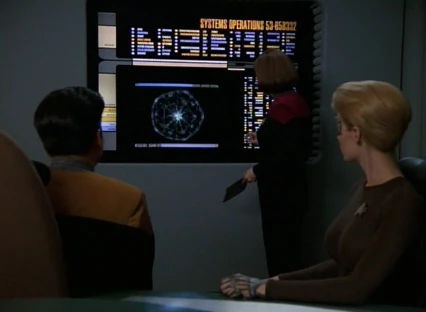Star Trek technology seems to use energy densities and quantities of power that really beggar belief compared to IRL technology. It's not surprising they need to use a much more energy-dense transmission system to power things like their shields, force fields, navigational deflectors, weapons, engines, and so on. What is a bit more perplexing and has been lampooned by fans online going back into the last century is why the EPS grid is hooked into consoles, rather than having two separate systems.
If I wanted to fanon this, I'd say this might come down to Starfleet having a tinkerer mentality. Having your consoles directly hooked into the beating heart of the ship might mean that you have more of a chance of McGuverying a solution via redirecting power even when you're only flying half a ship. But out-of-universe, it's because consoles blowing up is a great way to show the ship is in trouble and build tension without damaging an expensive physical/CG model.

